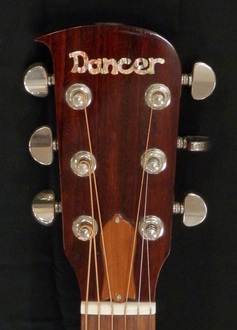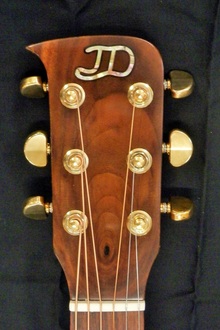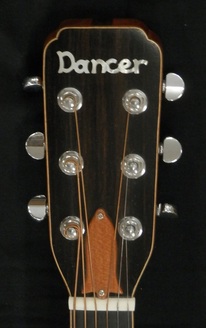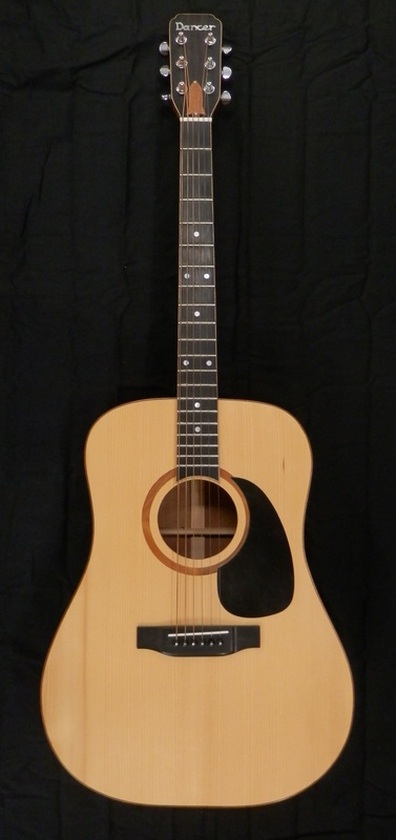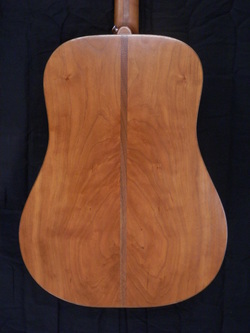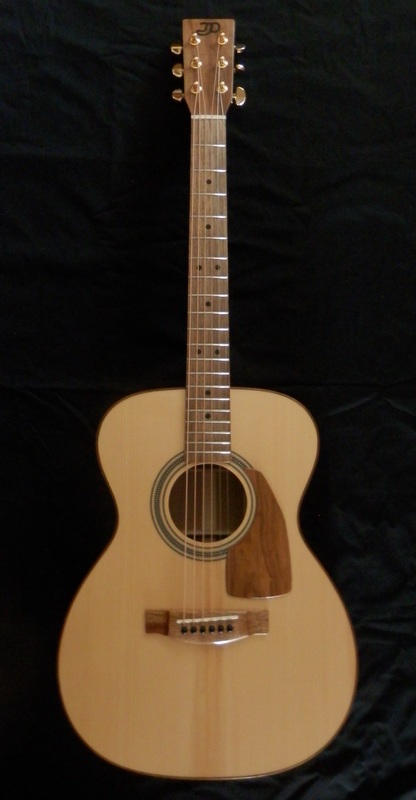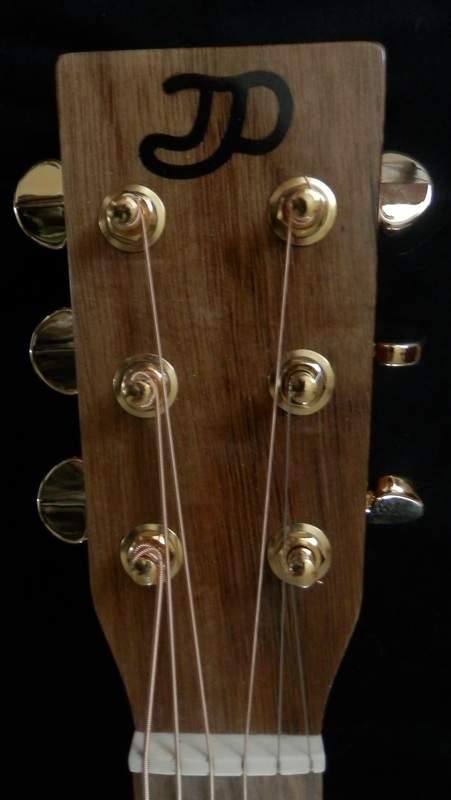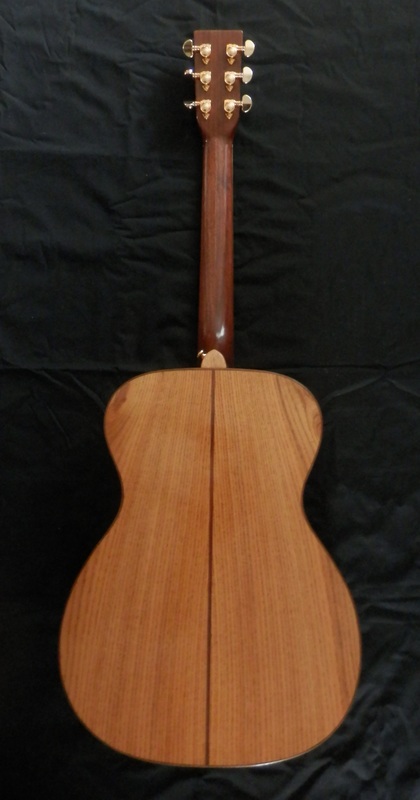"Hotter Than A Match Head" Guitars!
Updated 04/28/2015
Updated 04/28/2015
For me, guitars have been a challenge because they are such a popular instrument, and while I want to bring my own distinct design elements to guitar making in order to set me apart from other makers, it's difficult to come up with a lot of new stuff as it seems like everything has been done before. Therefore, what I have decided to do is endeavor to make a really good guitar with all-wood details (bindings, guards, etc.), using American grown wood, and limit any newfangledness to the "Hotter Than A Match Head" peg head design, and my new initials inlay as seen in the center photo above. Have a look.
I keep this guitar in my shop and play on it when I need a musical interlude, or to accompany a visiting fiddler.
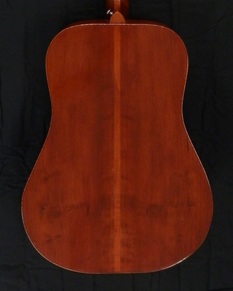
With a new guitar making book and Bill's instructions fresh in my mind, I went to work on this dreadnaught. Also made with cherry wood, this one has curly maple bindings and rosewood accessories, and on this one I came up with the "match head" peg head, and tried for a more visually appealing rosette of curly maple bound inside and out with black. The top of this guitar is more flat than not, because of the instructions I followed from my book. By the way, if you are the least bit curious on why I do things the way I do, see my "Waxing Luthier" page. I colored blended the top with the sides, and finished the guitar with tung oil. This instrument is in my living room and I play it when friends come over to jam, or when I go to the park to play fiddle I'll bring it along in case a strummer wants to join in.
|
"Frassy"
New for 2015, "Frassy" is the first of what will be two sassafras guitars to come out of my shop. It is features wood from southwest Virginia, with the exception of the persimmon and ebony, which were imported from Hamsley Hardwoods, Georgia (USA, not SE Europe) and where ever Stewart-McDonald imports their ebony from, respectively. The walnut is from my backyard, and the red spruce is from White Top Mountain, Virginia. Due to the width of the boards, the OM size is what they have to be, but I find this model to be much more comfortable to hold and play. It's a nice guitar. $1,500.00
Content copyright 2015. John Dancer Violins. All rights reserved.
